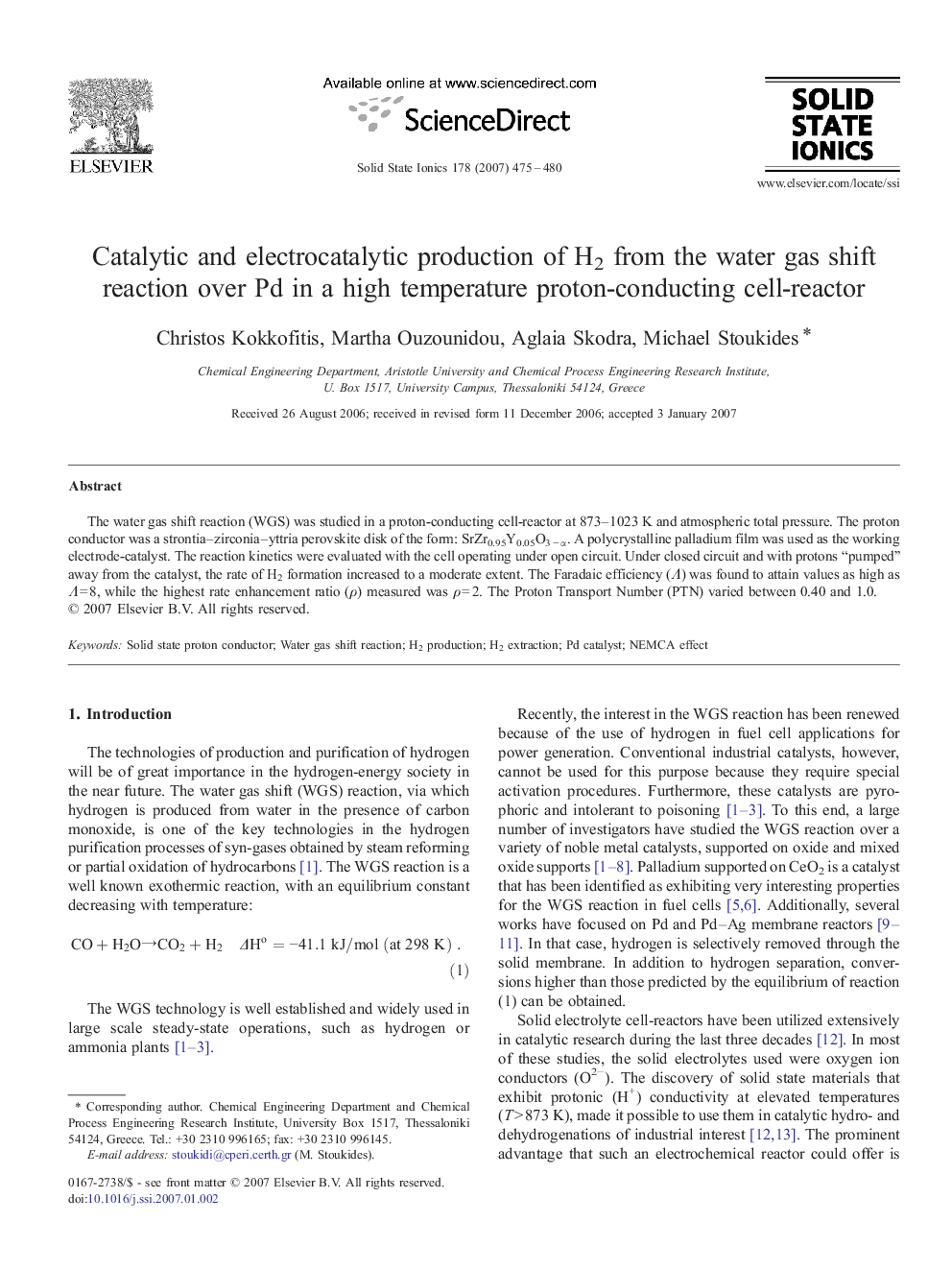| Article ID | Journal | Published Year | Pages | File Type |
|---|---|---|---|---|
| 1298866 | Solid State Ionics | 2007 | 6 Pages |
Abstract
The water gas shift reaction (WGS) was studied in a proton-conducting cell-reactor at 873–1023 K and atmospheric total pressure. The proton conductor was a strontia–zirconia–yttria perovskite disk of the form: SrZr0.95Y0.05O3 − α. A polycrystalline palladium film was used as the working electrode-catalyst. The reaction kinetics were evaluated with the cell operating under open circuit. Under closed circuit and with protons “pumped” away from the catalyst, the rate of H2 formation increased to a moderate extent. The Faradaic efficiency (Λ) was found to attain values as high as Λ = 8, while the highest rate enhancement ratio (ρ) measured was ρ = 2. The Proton Transport Number (PTN) varied between 0.40 and 1.0.
Related Topics
Physical Sciences and Engineering
Chemistry
Electrochemistry
Authors
Christos Kokkofitis, Martha Ouzounidou, Aglaia Skodra, Michael Stoukides,
